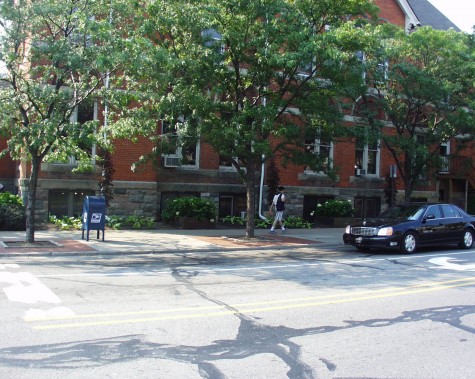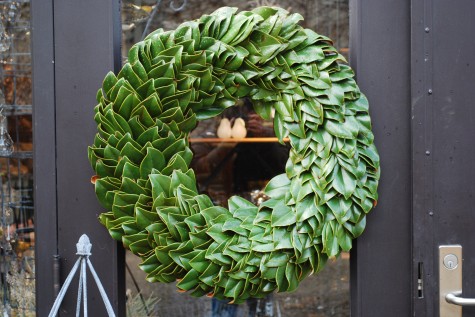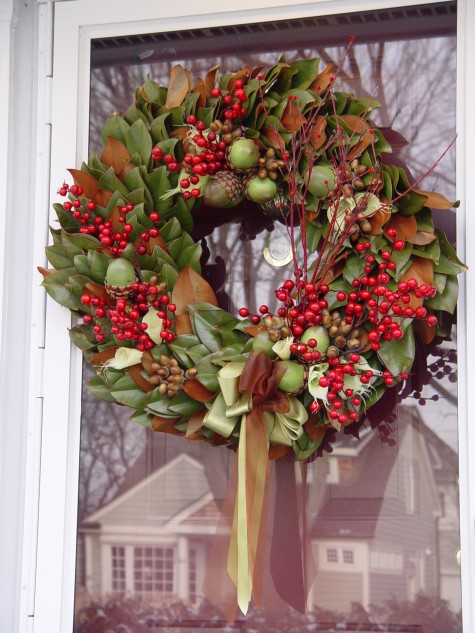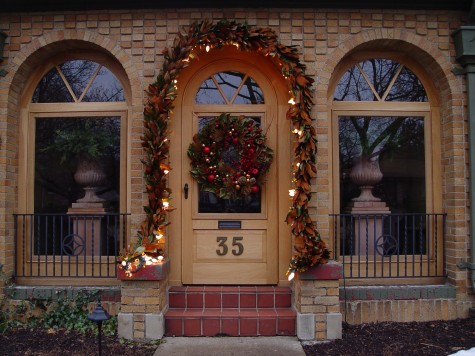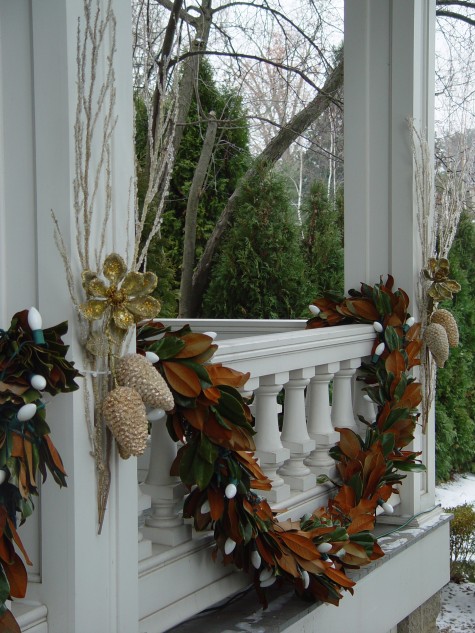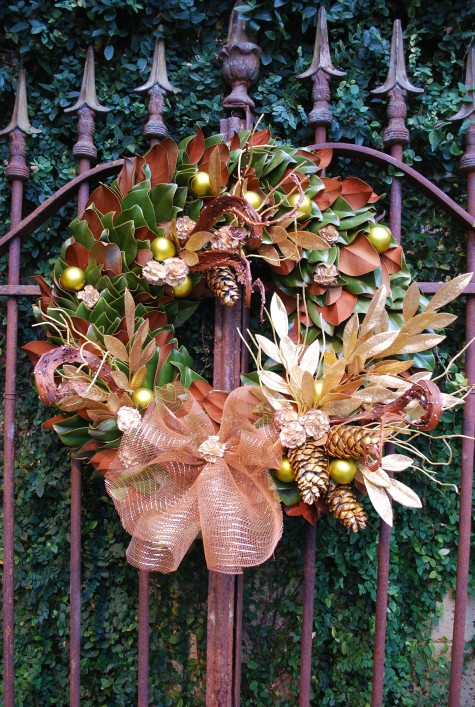![100_2166[1] 100_2166[1]](https://deborahsilver.com/wp-content/uploads/2010/02/100_216611-475x356.jpg) One of the better parts of my work is buying trees; I buy lots of them. They may come from Oregon, or North Carolina, or Tennessee, or Macomb township just a few minutes from me. I do not own a nursery; I buy trees for specific projects. I choose based on what a client space and environment demands. The branch structure on these beech give me a great idea of their eventual shape. Jim’s son in the picture-I have a good idea of the size of these trees. As much as I would want to have one gorgeous specimen of every tree hardy in my zone, I have to make choices. These oval growing beech-perfect for a spot I am looking to plant.
One of the better parts of my work is buying trees; I buy lots of them. They may come from Oregon, or North Carolina, or Tennessee, or Macomb township just a few minutes from me. I do not own a nursery; I buy trees for specific projects. I choose based on what a client space and environment demands. The branch structure on these beech give me a great idea of their eventual shape. Jim’s son in the picture-I have a good idea of the size of these trees. As much as I would want to have one gorgeous specimen of every tree hardy in my zone, I have to make choices. These oval growing beech-perfect for a spot I am looking to plant.
![100_2191[1] 100_2191[1]](https://deborahsilver.com/wp-content/uploads/2010/02/100_21911-475x633.jpg) Some trees can screen an untoward view. Other trees provide shade from the summer sun. Trees have function; a well placed tree can cut the temperature inside a home by plenty on a hot July day. Trees also delight the eye in a landscape, via their shape, stature, bark, blooms, leaves, berries. They are the giants of the garden-proper placement is essential. These cooly columnar European green beech would do a great service screening a neighboring play structure in a very narrow space-their architectural shape and bearing-a big plus. A straight European green beech-step aside, and provide lots and lots of room, and an equal amount of time.
Some trees can screen an untoward view. Other trees provide shade from the summer sun. Trees have function; a well placed tree can cut the temperature inside a home by plenty on a hot July day. Trees also delight the eye in a landscape, via their shape, stature, bark, blooms, leaves, berries. They are the giants of the garden-proper placement is essential. These cooly columnar European green beech would do a great service screening a neighboring play structure in a very narrow space-their architectural shape and bearing-a big plus. A straight European green beech-step aside, and provide lots and lots of room, and an equal amount of time.
![DSC_5337[1] DSC_5337[1]](https://deborahsilver.com/wp-content/uploads/2010/02/DSC_53371-475x317.jpg) White pine is the state tree of Michigan. In woods of age in the Upper Peninsula of Michigan, their open growth and gorgeous towering shapes are all anyone would ever need in a tree. Should you have acreage, that is. Sheared native white pine is just that-sheared. Columnar white pine is very unlike our native species. Elegantly tall and narrow, they can give a garden stature without bulk. I have seen white pines in Michigan that could easily shade my entire property-they are not for me. This edited version I could much more easily find a home for.
White pine is the state tree of Michigan. In woods of age in the Upper Peninsula of Michigan, their open growth and gorgeous towering shapes are all anyone would ever need in a tree. Should you have acreage, that is. Sheared native white pine is just that-sheared. Columnar white pine is very unlike our native species. Elegantly tall and narrow, they can give a garden stature without bulk. I have seen white pines in Michigan that could easily shade my entire property-they are not for me. This edited version I could much more easily find a home for.
 I have a great fondness for Katsura trees. Known formally as Cercidiphyllum Japonicum, their shape and quiet density make them one of my favorite trees. They have no blooms of note, but they do have extraordinary heart shaped leaves that are blue green, with veins decidedly purple. This coloration is unique to this species. These trees have been pruned; the effect is dense, and topiary-like.
I have a great fondness for Katsura trees. Known formally as Cercidiphyllum Japonicum, their shape and quiet density make them one of my favorite trees. They have no blooms of note, but they do have extraordinary heart shaped leaves that are blue green, with veins decidedly purple. This coloration is unique to this species. These trees have been pruned; the effect is dense, and topiary-like.
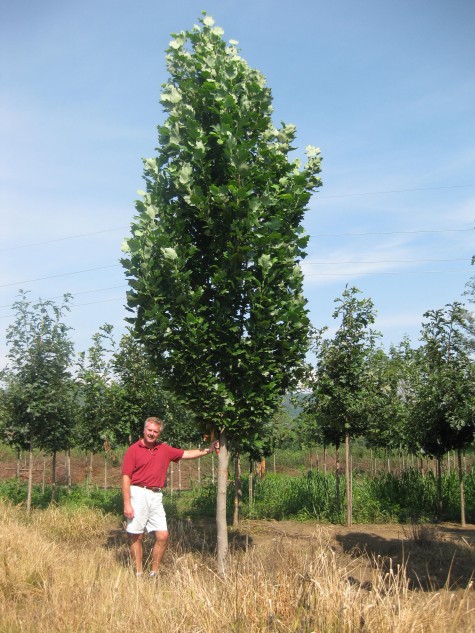 Liriodendron tulipfera, or tulip tree, is one of the largest growing trees in North America. Their green and orange tulip shaped blooms are lost on most. The trees do not begin blooming until they are old, and very tall. You need to stand off, with a spyglass, to appreciate this blooming part. I have a client with screened porches high in the air-I should talk to her about these trees. The columnar tulip tree you might be able to handle. The same smooth grey bark, the same luscious palmate leaves-in a narrow version.
Liriodendron tulipfera, or tulip tree, is one of the largest growing trees in North America. Their green and orange tulip shaped blooms are lost on most. The trees do not begin blooming until they are old, and very tall. You need to stand off, with a spyglass, to appreciate this blooming part. I have a client with screened porches high in the air-I should talk to her about these trees. The columnar tulip tree you might be able to handle. The same smooth grey bark, the same luscious palmate leaves-in a narrow version.
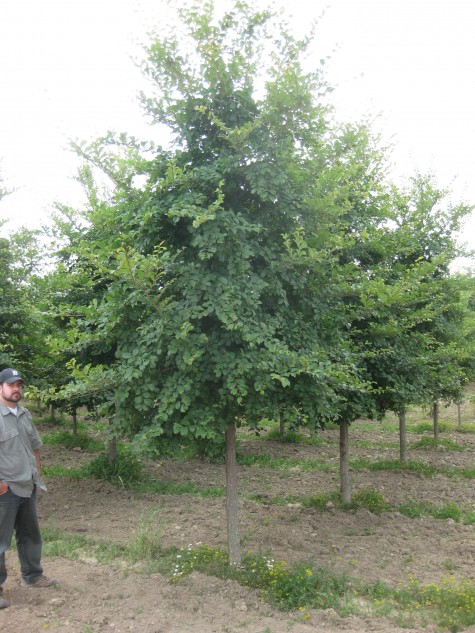 This untrimmed katsura presents very differently than those that are pruned. Many trees are seed grown, producing great variation from tree to tree. If you are looking for a tree, look in person. Even a young tree will give you a hint as to what it will become. Make friends, then buy.
This untrimmed katsura presents very differently than those that are pruned. Many trees are seed grown, producing great variation from tree to tree. If you are looking for a tree, look in person. Even a young tree will give you a hint as to what it will become. Make friends, then buy.
![securedownload[2] securedownload[2]](https://deborahsilver.com/wp-content/uploads/2010/02/securedownload2-475x315.jpg) These espaliered Bradford pears I am considering buying-with no project in mind. I think I might just have to have them. They are old enough to stand on their own-no structure needed. This winter aspect makes my heart pound. How they catch the snow-so beautiful. It is a sign, when you don’t think you can live without something. These trees have that feeling.
These espaliered Bradford pears I am considering buying-with no project in mind. I think I might just have to have them. They are old enough to stand on their own-no structure needed. This winter aspect makes my heart pound. How they catch the snow-so beautiful. It is a sign, when you don’t think you can live without something. These trees have that feeling.
![securedownload[1] securedownload[1]](https://deborahsilver.com/wp-content/uploads/2010/02/securedownload1-475x315.jpg)
Come spring, they will enchant a space. Most of the trees I have pictured here would work in small gardens, or tight spaces. No need to deny yourself trees. Gardeners can be so funny. First off, they want the plants they can’t have. Take the time to figure out exactly what it is you like. Once you figure out what it is that moves you about a plant, or a tree, I am sure there is something out there that will be just perfect.
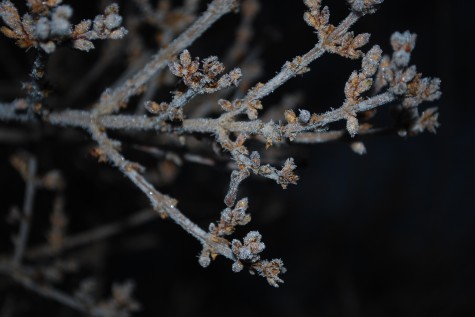 Hoarfrost is simply frozen dew. Though this form has none of the romance of a dewy June morning, it is lovely. If we are going to get hoarfrost, it usually appears in January, after a rain. We have had intermittent rain for several days, with freezing temperatures overnight; this morning was 24 degrees. As a result, everything was coated in fine white ice crystals barely visible in the fog. This made for a beautiful January morning.
Hoarfrost is simply frozen dew. Though this form has none of the romance of a dewy June morning, it is lovely. If we are going to get hoarfrost, it usually appears in January, after a rain. We have had intermittent rain for several days, with freezing temperatures overnight; this morning was 24 degrees. As a result, everything was coated in fine white ice crystals barely visible in the fog. This made for a beautiful January morning. 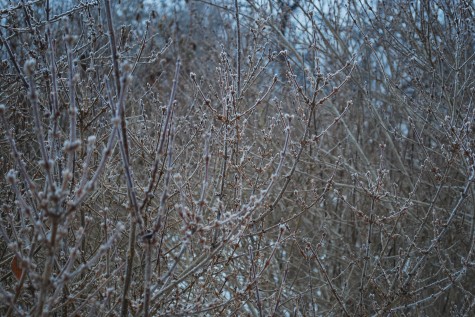 The frost on these forsythia branches was very subtle-just enough to greatly soften their appearance. Deciduous shrubs in winter have a quiet beauty all their own. The winter is one of the best times to evaluate shrubs for your garden; their winter appearance should be as important a factor in your selection as their summer dress. The frost in particular makes their shape and habit clear.
The frost on these forsythia branches was very subtle-just enough to greatly soften their appearance. Deciduous shrubs in winter have a quiet beauty all their own. The winter is one of the best times to evaluate shrubs for your garden; their winter appearance should be as important a factor in your selection as their summer dress. The frost in particular makes their shape and habit clear. 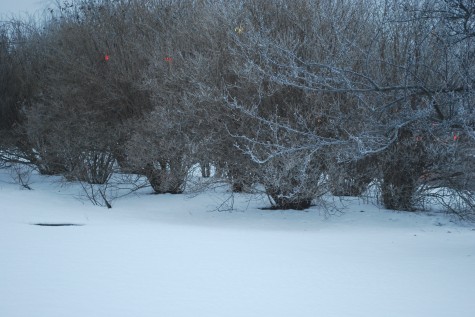
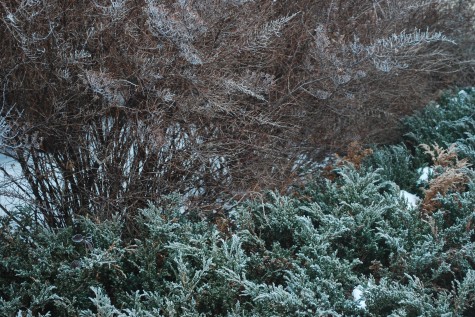
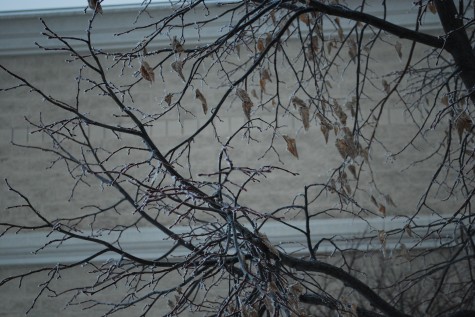 Trees can be a nuisance to prune, as most of the activity is a long way from the ground. But the winter silhouette will make clear where a branch could be cleaned up, or headed back, in a good and beautiful way. The stub pruned branch in the middle of this picture-I would take it all the back to the big branch. Whatever shape you are trying to encourage makes itself known now.
Trees can be a nuisance to prune, as most of the activity is a long way from the ground. But the winter silhouette will make clear where a branch could be cleaned up, or headed back, in a good and beautiful way. The stub pruned branch in the middle of this picture-I would take it all the back to the big branch. Whatever shape you are trying to encourage makes itself known now.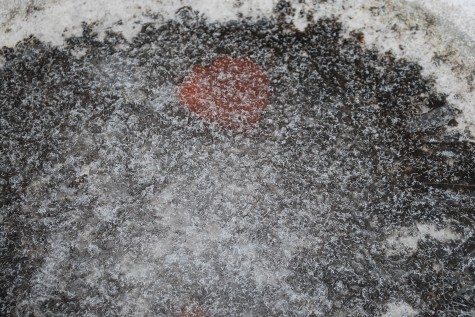 The hoarfrost sticks to ice as well as any other surface. A single fall leaf frozen in the ice may be a melancholy reminder of the dormant garden, but the colors, textures and shapes here are quite beautiful.
The hoarfrost sticks to ice as well as any other surface. A single fall leaf frozen in the ice may be a melancholy reminder of the dormant garden, but the colors, textures and shapes here are quite beautiful. Every bark has its own brown. The crabapples are grey and black, the forsythias a warm yellow brown. Choosing shrubs and trees for their bark has its winter rewards. Now is the perfect time to look at bark; is a dominant feature of the winter landscape. With every bit as much variation as leaves or flowers, there is actually a lot to see.
Every bark has its own brown. The crabapples are grey and black, the forsythias a warm yellow brown. Choosing shrubs and trees for their bark has its winter rewards. Now is the perfect time to look at bark; is a dominant feature of the winter landscape. With every bit as much variation as leaves or flowers, there is actually a lot to see. The field next door was breathtaking this morning. The white frost, the blue white snow, and the dark rock may lack the romance of May, but there is this alternate garden universe which is worth seeing. Though not in active grown, woody plants, and the remains of perennial plants have a lot to say, even in the winter.
The field next door was breathtaking this morning. The white frost, the blue white snow, and the dark rock may lack the romance of May, but there is this alternate garden universe which is worth seeing. Though not in active grown, woody plants, and the remains of perennial plants have a lot to say, even in the winter. 
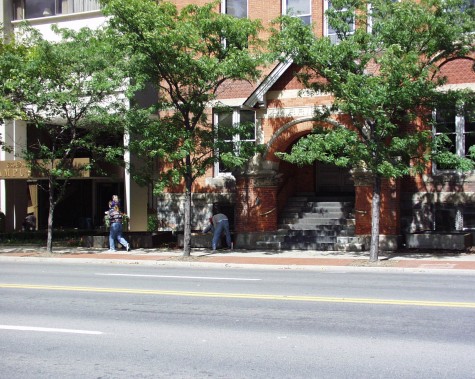 There are times when color is the most important element of a landscape design. This building, circa 1880, had become home to a well known and cutting edge advertising firm-Harris Marketing. Any commercial client in the design business is keen that the landscape reflect as much attention to design as possible. What you see outside is a visual reflection of what goes on inside. In this case, the architecture and materials of the building itself made the color issue a very important design issue.
There are times when color is the most important element of a landscape design. This building, circa 1880, had become home to a well known and cutting edge advertising firm-Harris Marketing. Any commercial client in the design business is keen that the landscape reflect as much attention to design as possible. What you see outside is a visual reflection of what goes on inside. In this case, the architecture and materials of the building itself made the color issue a very important design issue.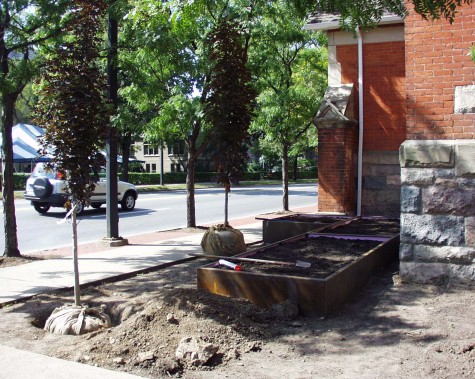 Though the building was large, and several stories high, there was very little land on which to landscape. The building facade was comprised of brick of an astonishingly bright orange color, and stone. In addition, the right of way space was paved in orange brick. Any successful landscape design would need to address that color in a thoughtful way, and then create visual interest in a very tight space. My first decision was to choose one plant element that would represent that brick color-a Crimson Sentry maple. Since the right of way locusts were planted at regular intervals, and framed in brick, I planted a row of these columnar red/orange/brown leaved maples in the spaces between the locusts-this visually added the right of way trees, and the land in which they were planted, to my landscape design.
Though the building was large, and several stories high, there was very little land on which to landscape. The building facade was comprised of brick of an astonishingly bright orange color, and stone. In addition, the right of way space was paved in orange brick. Any successful landscape design would need to address that color in a thoughtful way, and then create visual interest in a very tight space. My first decision was to choose one plant element that would represent that brick color-a Crimson Sentry maple. Since the right of way locusts were planted at regular intervals, and framed in brick, I planted a row of these columnar red/orange/brown leaved maples in the spaces between the locusts-this visually added the right of way trees, and the land in which they were planted, to my landscape design. 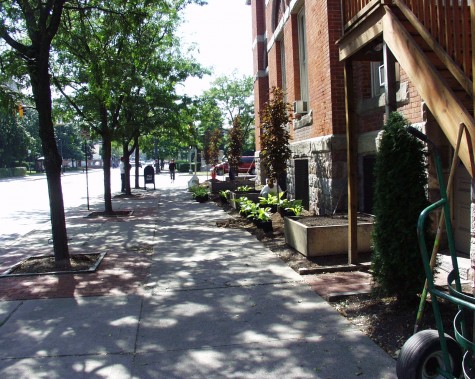 I rarely plant dark foliaged trees, as the color can be hard to work with, and muddy at any distance. This siting places these maples close to the viewers eye, backed up by that bright orange brick; the color of those leaves worked well. Large bottomless planter boxes made from corten steel served a dual purpose. The eventual orange brown of the steel would make my color references stronger. They also permitted me to make a grade change in a small space. They made a 3-D representation of the brick borders around the locust trees. This unexpected element catches the eye.
I rarely plant dark foliaged trees, as the color can be hard to work with, and muddy at any distance. This siting places these maples close to the viewers eye, backed up by that bright orange brick; the color of those leaves worked well. Large bottomless planter boxes made from corten steel served a dual purpose. The eventual orange brown of the steel would make my color references stronger. They also permitted me to make a grade change in a small space. They made a 3-D representation of the brick borders around the locust trees. This unexpected element catches the eye. 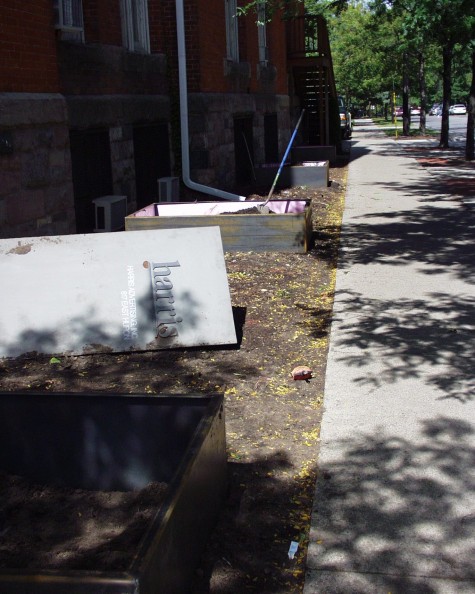 I planned to plant hydrangeas in the boxes, and Sum and Substance hostas in the ground. The greenish white flowers of the hydrangeas, and the lime green foliage of the hostas would contrast with those orange brown leaves in a sparkly way. We lined the planter boxes with sheet insulation; once the ground would freeze in the boxes, I wanted it to stay frozen. Too much freezing and thawing might hinder my chances for success with hydrangeas, whose roots would be above grade.
I planned to plant hydrangeas in the boxes, and Sum and Substance hostas in the ground. The greenish white flowers of the hydrangeas, and the lime green foliage of the hostas would contrast with those orange brown leaves in a sparkly way. We lined the planter boxes with sheet insulation; once the ground would freeze in the boxes, I wanted it to stay frozen. Too much freezing and thawing might hinder my chances for success with hydrangeas, whose roots would be above grade.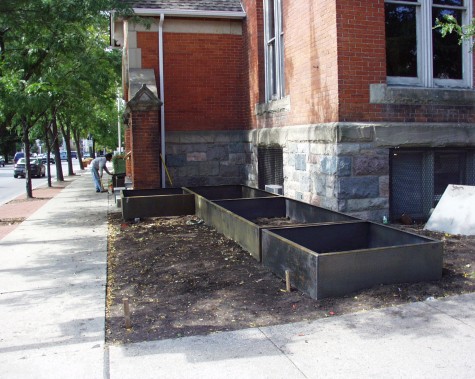 Making this long run in several boxes dramatically reduced the fabrication cost, and made transport much easier. The boxes and hydrangeas would also screen the basement level windows, and window air conditioners from view. Old buildings like this one a very difficult to adapt to modern air conditioning. This fact did not need to be part of the public presentation of the building.
Making this long run in several boxes dramatically reduced the fabrication cost, and made transport much easier. The boxes and hydrangeas would also screen the basement level windows, and window air conditioners from view. Old buildings like this one a very difficult to adapt to modern air conditioning. This fact did not need to be part of the public presentation of the building. A stripe of PJM rhododendron unexpectedly repeats the maple leaf color. I think it is a good idea to be clear in executing what you are trying to achieve. There would be no opportunity to explain to passersby what I meant. If I need to explain the intent of a design, I need to rethink the design.
A stripe of PJM rhododendron unexpectedly repeats the maple leaf color. I think it is a good idea to be clear in executing what you are trying to achieve. There would be no opportunity to explain to passersby what I meant. If I need to explain the intent of a design, I need to rethink the design.  It would take some time for that corten steel to orange up. Corten steel only rusts to a certain point, and then becomes stable. Once the hydrangeas matured, they completely screened the lower floor windows. Though I would not ordinarily block light to the interior of a building, there were security issues that my client decided were more important.
It would take some time for that corten steel to orange up. Corten steel only rusts to a certain point, and then becomes stable. Once the hydrangeas matured, they completely screened the lower floor windows. Though I would not ordinarily block light to the interior of a building, there were security issues that my client decided were more important.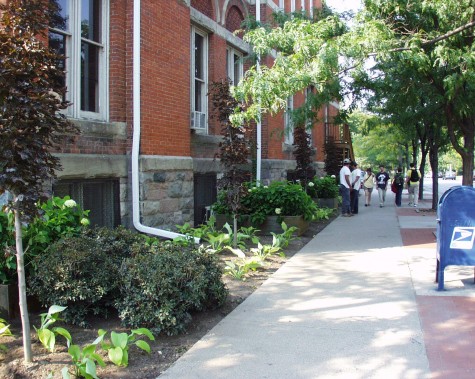 The finished landscape has a beat. A lively rhythm, and attention to the color relationships established by the building and environment attracts attention-any business hopes for this. I would have been happier for more evergreens given our climate, but my client reasoned that few people would be walking by in the winter. The orangy brown boxes would make a statement to people driving by. Any strong geometric statement would attract the kind of attention they were looking for.
The finished landscape has a beat. A lively rhythm, and attention to the color relationships established by the building and environment attracts attention-any business hopes for this. I would have been happier for more evergreens given our climate, but my client reasoned that few people would be walking by in the winter. The orangy brown boxes would make a statement to people driving by. Any strong geometric statement would attract the kind of attention they were looking for. 